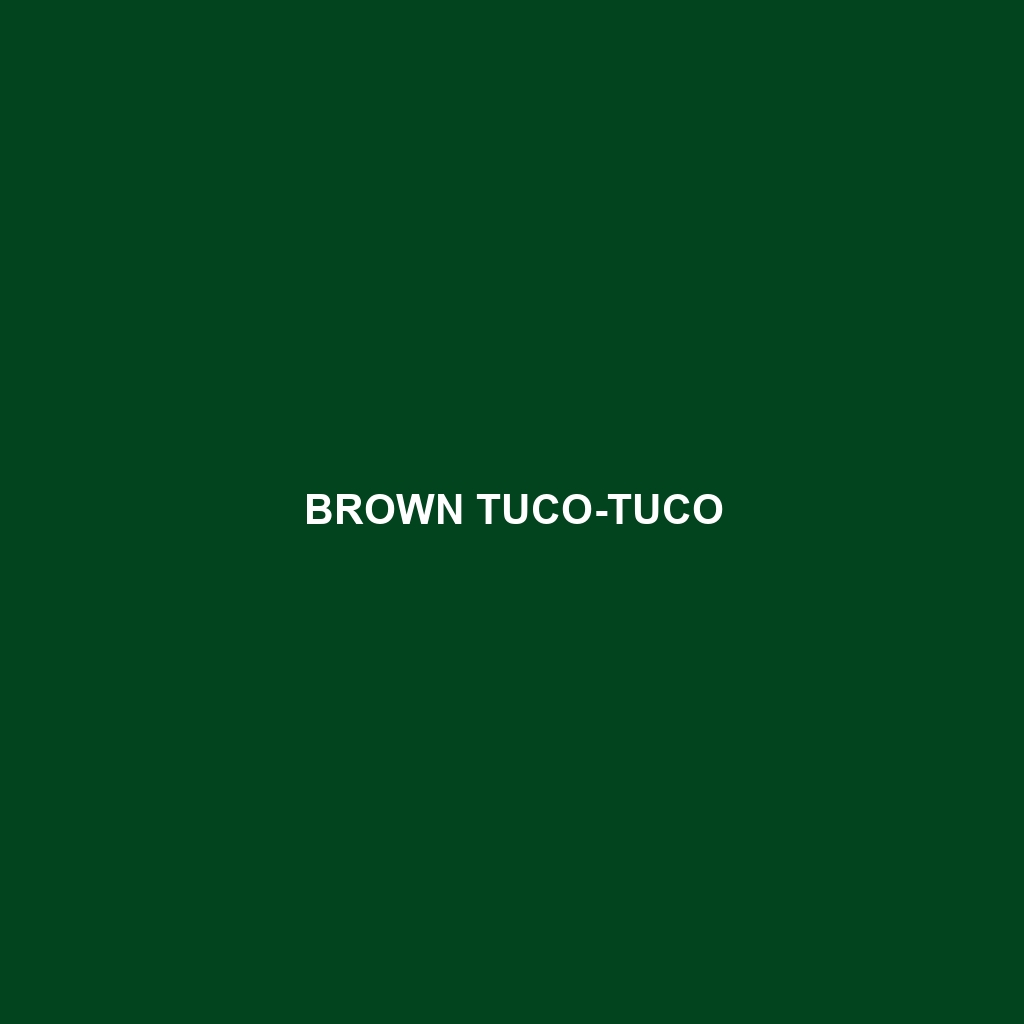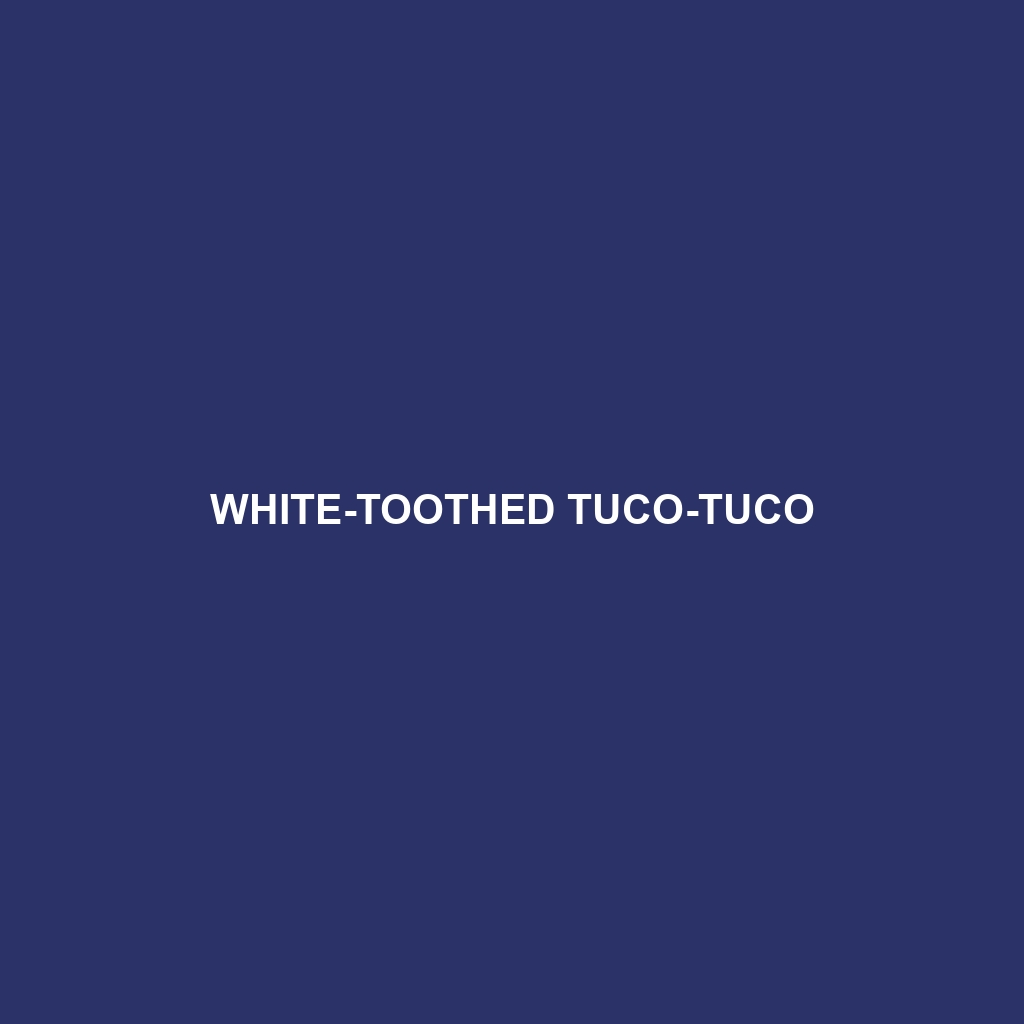Discover the unique Plebiscite Tuco-tuco, a medium-sized rodent native to the mountainous grasslands and scrublands of the South American Andes. With its distinctive physical traits, diurnal behavior, and vital role in soil aeration, this endangered species faces significant threats from habitat destruction. Learn more about its fascinating lifestyle and the conservation efforts needed to protect it.
Tag: Argentina
Brown Tuco-tuco
Discover the fascinating world of the Brown Tuco-tuco (<i>Ctenomys adecli</i>), a unique rodent native to the grasslands of Argentina. This robust herbivore is a master burrower, playing a vital role in its ecosystem while adapting to challenges like habitat loss and drought. Explore its behaviors, diet, reproduction, and conservation status in this comprehensive overview.
Monte Hermoso Tuco-tuco
Discover the Monte Hermoso Tuco-tuco, a unique rodent species native to Argentina's coastal sand dunes. Learn about its fascinating habitat, distinctive physical features, nocturnal behavior, herbivorous diet, and crucial role in maintaining the ecosystem, as well as the conservation challenges it faces. Join us in exploring the life of this vulnerable species and its remarkable adaptations.
Pearson’s Tuco-tuco
Discover Pearson's Tuco-tuco, a unique rodent species native to the grasslands of Argentina. With its distinctive burrowing habits and vital role in soil aeration, this nocturnal creature faces increasing threats from habitat destruction. Learn about its fascinating behavior, diet, and conservation status in this insightful blog post.
Perrens’s Tuco-tuco
Discover the fascinating world of Perrens's Tuco-tuco, a unique rodent native to central Argentina's grasslands. Learn about its intriguing burrowing behaviors, dietary habits, and critical role in maintaining ecosystem balance, as well as the conservation challenges it faces due to habitat loss. This blog post delves into the life and importance of this vulnerable species, highlighting why it deserves our attention.
Mendoza Tuco-tuco
Discover the fascinating world of the Mendoza Tuco-tuco, a unique rodent native to the Andean foothills of Argentina. This nocturnal creature, known for its robust build and extensive burrowing habits, plays a vital role in its ecosystem as a seed disperser and soil aerator. Explore its habitat, diet, and conservation status to understand the challenges this vulnerable species faces amid habitat loss and environmental change.
Minute Tuco-tuco
Discover the fascinating world of the **Minute Tuco-tuco** (*Ctenomys minutus*), a small rodent native to the grasslands of Argentina. With its remarkable burrowing skills, social behavior, and vital role in soil aeration, this vulnerable species faces significant threats from habitat loss. Learn more about its intriguing physical traits, diet, and conservation efforts in our detailed species description.
Natterer’s Tuco-tuco
Discover the fascinating world of the Natterer's Tuco-tuco, a burrowing rodent native to the grasslands of South America. With unique adaptations for digging and a crucial role in their ecosystem, these nocturnal creatures face challenges from habitat loss and require urgent conservation efforts. Learn about their physical characteristics, diet, and behaviors that make them vital to maintaining ecological balance.
White-toothed Tuco-tuco
Discover the fascinating world of the White-toothed Tuco-tuco, a burrowing rodent native to the grasslands of South America. With its distinctive white teeth and unique lifestyle, this species plays a vital role in its ecosystem as a seed disperser and soil aerator. Learn about its habitat, diet, and the conservation challenges it faces in this engaging blog post.
Magellanic Tuco-tuco
Discover the fascinating world of the **Magellanic Tuco-tuco** (*Ctenomys magellanicus*), a unique rodent native to the temperate grasslands and forests of Argentina and Chile. Known for their extensive burrowing systems and robust physical characteristics, these vulnerable creatures play a crucial role in their ecosystem by aerating soil and dispersing seeds. Learn more about their behavior, diet, and conservation status in our insightful blog post.









